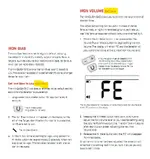Bruce R
Bronze Member
- Joined
- Mar 18, 2016
- Messages
- 2,272
- Reaction score
- 2,098
- Golden Thread
- 0
- Location
- Shamokin, Pa.
- Detector(s) used
- Whites coinmaster
- Primary Interest:
- Metal Detecting
- #1
Thread Owner
I haven’t taken the machine out yet since there’s a foot of snow out there, but I’m sitting here trying to decipher the user manual. I’ve just upgraded from a coinmaster prism and I’m hoping to get away from some of the problems I’ve had with it. I detect a site where an airliner crashed in 1948, so there’s lots of trash, with the prism I’ll get a strong hit showing 50 cent on the screen but I just end up digging up a scrap of aluminum, once in a great while I’ll get something good but I’d say 95 percent of the time it’s just aluminum plane parts. Can the 540 work through this problem ? Also, the 540 came with 2 coils, one small and one big but the manual doesn’t say anything about them. Any advice out there 






